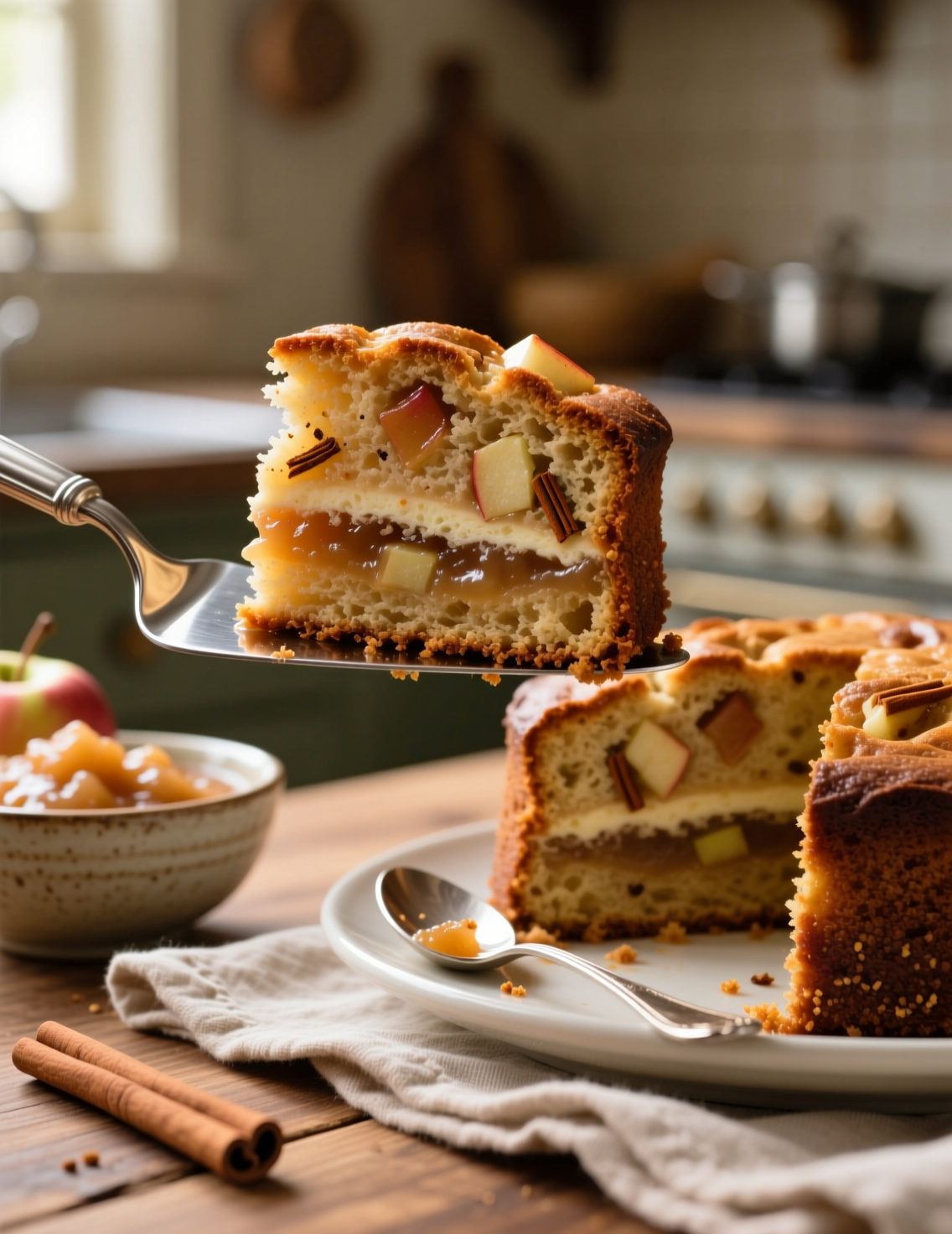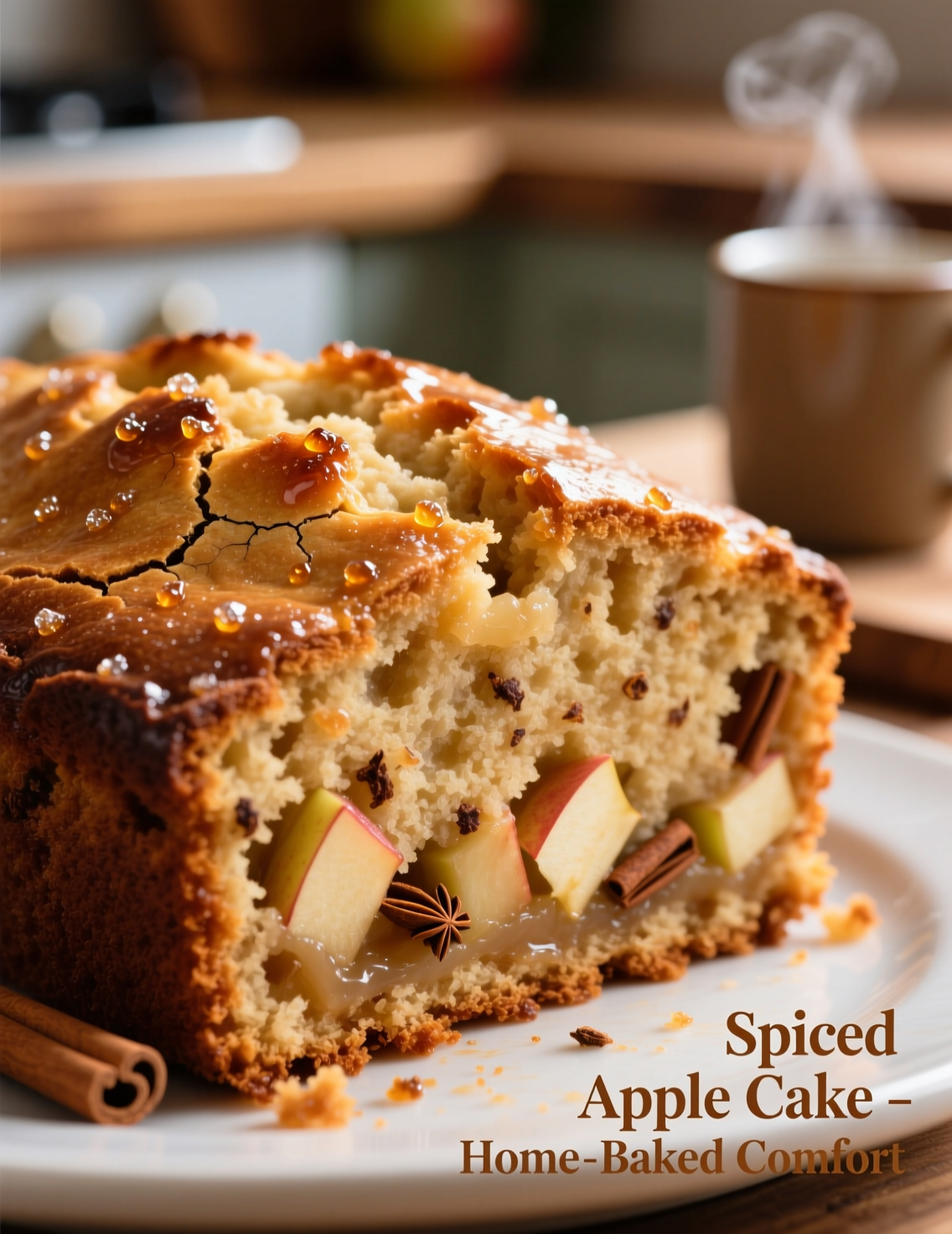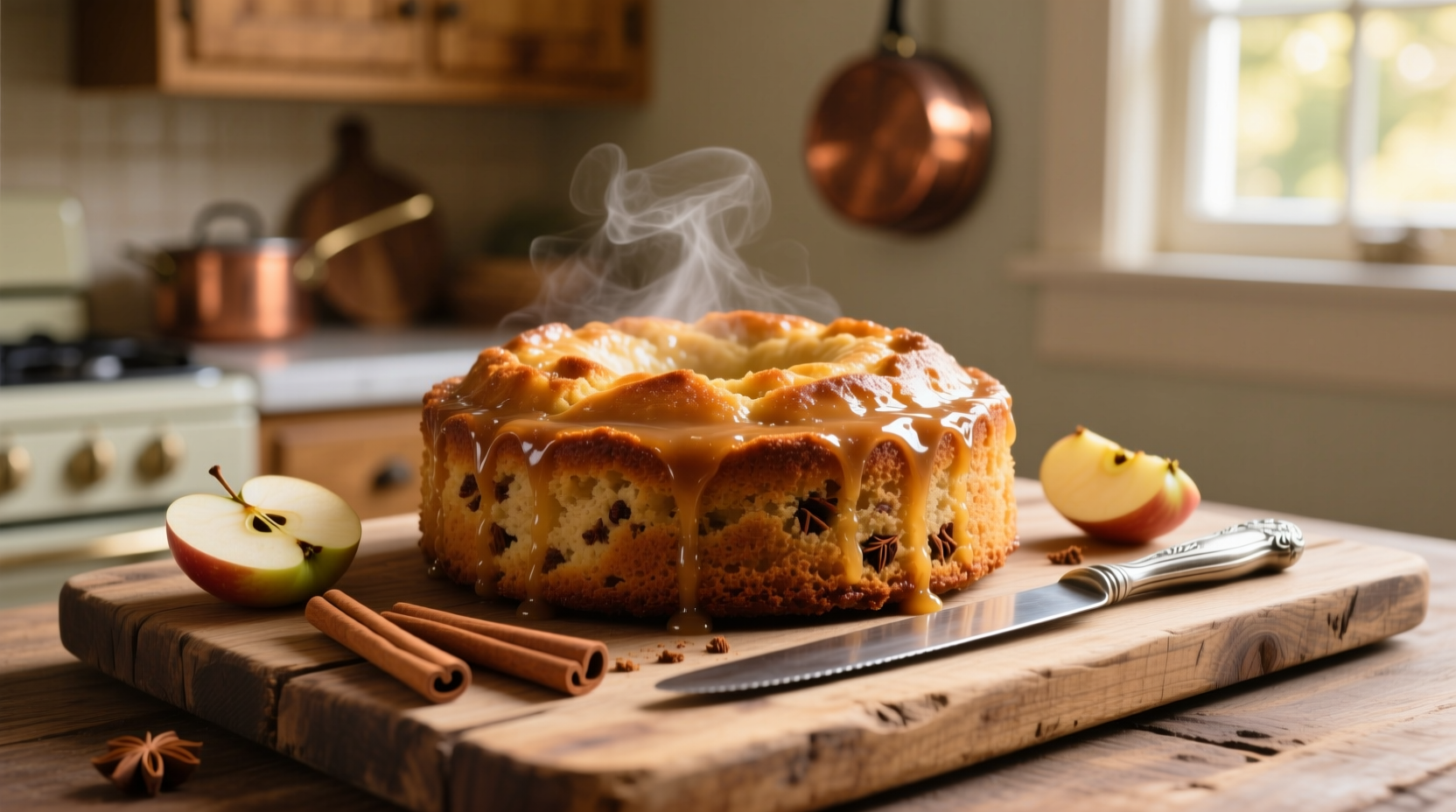There’s a reason spiced baked applesauce cake has lingered on bakery shelves and home kitchens alike for decades. Its charm isn’t just nostalgia; it’s the perfect harmony of texture, spice, and moisture. If you’ve ever struggled with a dry, flavorless cake despite following the recipe to the letter, you’ll appreciate this deep dive. We’re going beyond basics, unraveling why applesauce transforms crumbly wheat into a tender, almost cloud-like cake. And yes, this is the cake that stays moist for days—if you can resist it that long.
Why Applesauce Works Wonders in Baking
Many home bakers underestimate applesauce. It’s not just a sugar substitute or a vegan-friendly option. Chemically, applesauce is about 85% water and 12% sugar. That water content interacts with flour proteins to reduce gluten formation, resulting in a softer, more tender crumb. Simultaneously, the natural sugars in apples contribute to browning via the Maillard reaction, producing a rich, caramelized aroma. Studies in the Journal of Food Science have shown that replacing up to 50% of fat with applesauce in baked goods can maintain structure while improving moisture retention.
But beware—too much, and the cake can become gummy. Precision matters, especially in professional baking where texture is scrutinized. Most recipes suggest a 1:1 substitution for butter or oil, but adjusting based on flour type, oven temperature, and even altitude can make or break your cake.
Selecting the Right Apples for Applesauce
Not all apples are created equal. Tart apples like Granny Smith produce a sharper, tangy applesauce that balances the sweetness of brown sugar. Meanwhile, Gala or Fuji apples provide a naturally sweeter profile, which can allow you to reduce added sugar by up to 20%. Experts suggest using a combination for complexity—think 60% sweet apples, 40% tart apples.
The ripeness of your apples is equally crucial. Overripe apples make a watery, overly sweet sauce, while under-ripe apples create a bland, dense cake. Ideally, aim for firm, fragrant apples with a high sugar-to-acid ratio. Homemade applesauce is always preferred over store-bought because commercial varieties often contain added water and stabilizers that can dilute flavor and alter baking chemistry.

The Secret Behind Moist Texture
Moisture in spiced baked applesauce cake doesn’t come from applesauce alone. Eggs, brown sugar, and sometimes buttermilk or yogurt interact to produce a soft crumb. Brown sugar, unlike white sugar, contains molasses, which attracts and retains water. That’s why cakes with brown sugar feel denser and moister.
Another factor professionals use is the creaming technique. Many home bakers skip it, thinking mixing is enough. Creaming butter and sugar introduces air pockets, which expand during baking and give the cake lift. But when using applesauce as a fat replacement, creaming isn’t always necessary. Instead, gentle folding ensures the batter isn’t overworked, which could activate gluten excessively and toughen the cake.
Spices: Not Just for Aroma
The “spiced” element is where mastery shines. Cinnamon, nutmeg, cloves, allspice—these aren’t just flavorings; they chemically interact with sugars and acids in the batter. Cinnamon, for instance, contains cinnamaldehyde, which not only adds warmth but enhances perceived sweetness, meaning you can slightly cut sugar without sacrificing flavor. Nutmeg in small amounts provides a nutty, earthy depth, while cloves offer a hint of pungency that balances the cake’s sweetness.
Professional bakers often toast spices lightly before adding to batter. This simple step releases volatile oils and dramatically boosts flavor complexity. Studies in culinary chemistry show that toasting spices increases the intensity of aroma compounds, which makes the final cake smell irresistible even before tasting.
Step-by-Step Expert Baking Guide
Ingredients:
- 1 ½ cups all-purpose flour
- 1 tsp baking soda
- ½ tsp baking powder
- ½ tsp salt
- 1 tsp cinnamon
- ½ tsp nutmeg
- ¼ tsp ground cloves
- ½ cup unsalted butter, softened
- 1 cup brown sugar, packed
- 2 large eggs
- 1 tsp vanilla extract
- 1 cup unsweetened applesauce
- ½ cup finely chopped nuts (optional)
- ½ cup raisins or dried cranberries (optional)
Method:
- Preheat the oven to 350°F (175°C). Grease a 9×13-inch baking pan. Lightly flour or line with parchment paper.
- Mix dry ingredients—flour, baking soda, baking powder, salt, and spices. Sift together for even distribution.
- Cream butter and sugar until light and fluffy, about 2–3 minutes. Add eggs, one at a time, beating gently after each.
- Incorporate applesauce and vanilla, folding gently to maintain air pockets.
- Fold dry ingredients into the wet mixture gradually, stopping when just combined. Overmixing will toughen your cake.
- Add nuts or dried fruits if using, ensuring even distribution.
- Bake for 35–40 minutes, checking doneness with a toothpick. Inserted in the center, it should come out slightly moist but not batter-coated.
- Cool in pan for 10 minutes before transferring to a wire rack. Slice and serve warm or at room temperature.
Common Mistakes and How to Avoid Them
Even seasoned bakers sometimes mess up spiced applesauce cakes. The most frequent issues are:
- Dry cake: Usually due to overbaking or too much flour. Always measure flour by weight, not volume, for consistency.
- Gummy texture: Overmixing activates gluten. Fold ingredients gently and avoid using a stand mixer on high speed for too long.
- Flat cake: Baking powder or soda may be old. Check the expiration and always preheat the oven properly.
- Underwhelming spice flavor: Use fresh spices, toast lightly, and avoid pre-mixed blends that may have lost potency.
Serving Suggestions and Variations
Moist spiced baked applesauce cake isn’t just a breakfast or dessert item—it’s versatile. Pair with whipped cream, cream cheese frosting, or even a drizzle of caramel for a more decadent presentation. For breakfast, serve warm with Greek yogurt or a smear of nut butter.
For professional kitchens, consider layering with thin slices of poached pears or apples between cake layers, creating a semi-french patisserie twist. Another modern variation is gluten-free; using almond or oat flour changes texture and flavor, but applesauce compensates for moisture loss effectively.

Storage and Shelf Life
One of the underrated benefits of applesauce cakes is shelf life. The high moisture content keeps the cake soft for up to five days at room temperature, wrapped tightly. Refrigeration extends life to a week, but can slightly firm the crumb. For long-term storage, slice and freeze. Thaw at room temperature; a brief 10-second microwave zap restores freshness remarkably well.
The Science of Flavor Development
Flavor in baked applesauce cake evolves over time. On day one, sweetness and spice dominate. By day three, enzymatic reactions between sugar and starches create deeper, caramelized notes. Professionals often bake cakes a day ahead, letting flavors marry overnight. This technique is particularly effective for cakes with warm spices, as the molecules diffuse and integrate fully, creating a more rounded taste profile.
Final Thoughts for Professionals
Moist spiced baked applesauce cake is deceptively simple. Yet, mastery requires attention to ingredient quality, technique, and timing. Small adjustments—apple variety, spice to sugar ratio, folding method—drastically alter texture and flavor. For chefs and bakers, experimenting with minor tweaks while respecting the chemistry ensures a reliable, delectable cake every time.
In short, this isn’t just a “homey” dessert; it’s a sophisticated, scientifically informed bake that rewards precision and creativity. Whether for a bakery menu, catering, or a dinner party, a perfectly executed spiced applesauce cake leaves an impression that’s subtle yet unforgettable.
FAQs
What makes applesauce cakes moist?
Applesauce adds water and sugar, keeping the crumb tender and soft.
Can I substitute applesauce for butter?
Yes, usually a 1:1 ratio works, but texture may vary slightly.
Which apples are best for baking?
A mix of tart (Granny Smith) and sweet (Gala/Fuji) gives balanced flavor.
Why toast the spices before adding?
Toasting releases essential oils, boosting aroma and depth of flavor.
How do I prevent a gummy cake?
Fold gently and avoid overmixing to prevent excess gluten formation.
How long does the cake stay fresh?
Up to 5 days at room temperature; a week refrigerated; longer if frozen.
Can I make it gluten-free?
Yes, almond or oat flour works, and applesauce maintains moisture.
What spices are essential for flavor?
Cinnamon, nutmeg, and cloves are key for warm, balanced spicing.
Should I bake it immediately or let batter rest?
Bake immediately; resting can alter leavening and affect texture.
How can I enhance flavor over time?
Flavors deepen overnight as sugars and spices meld—best eaten a day later.

Mariana is a passionate home cook who creates delicious, easy-to-follow recipes for busy people. From energizing breakfasts to satisfying dinners and indulgent desserts, her dishes are designed to fuel both your body and hustle.
When she’s not in the kitchen, she’s exploring new flavors and dreaming up her next recipe to share with the Foodie Hustle community.

